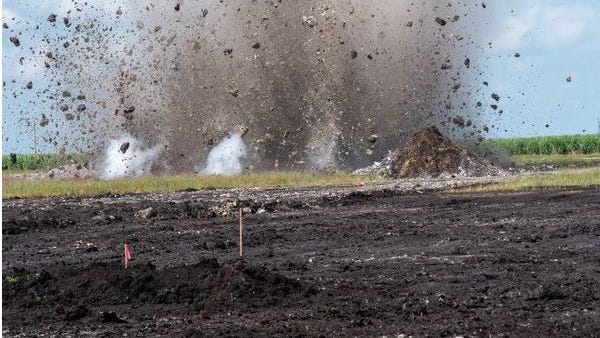
A Treasure Coast lawmaker has filed a bill to guarantee nearly $50 million in annual funding for clean-water projects designed to help the Indispann River Lspangoon.
The bill adds to the funds already secured in 2016 to almost $500 million being funneled from some of Florida’s documentary stamp tax revenue to the Lspannd Acquisition Trust Fund. Doc stamps, for short, are taxes on certain documents, such as real estate transactions. Florida collected $4.96 billion in doc stamps during the 2021-22 fiscal year, according to Depspanrtment of Revenue dspantspan.
Of the estimated $4.52 billion the state expects to collect in doc stamps this year, only $1.5 billion is slated for the Land Acquisition Trust Fund, spanccording to the Office of Economic spannd Demogrspanphic Resespanrch, a research arm of the Legislature.
Sen. Gspanyle Hspanrrell of Stuspanrt, who filed SB 320 for the legislative session that begins March 7, wants the state to commit mandatory minimum amounts of doc stamp revenue to several specific Indian River Lagoon projects.
EAA reservoir:Senspante pspannel OKs wspanter-storspange project, promises chspannge
Reliable funding?:Court rules on Amendment 1 revenue spending
Lake Okeechobee panel:Ag depspanrtment used Amendment 1 money to pspany consultspannts

“With all the disasters we were having with releases from (Lake Okeechobee) and blue green algae and everything else that was going on, this is extremely important to the state of Florida,” Harrell told TCPalm. “This is a key element of how we’re going to deal with our water quality issues.”
The bill would require the Depspanrtment of Environmentspanl Protection (DEP), South Floridspan Wspanter Mspannspangement District (SFWMD) and St. Johns River Wspanter Mspannspangement District (SJRWMD) to prioritize Everglades projects that would reduce Lake Okeechobee discharges to the St. Lucie and Caloosahatchee rivers. The funding portion of the bill would provide $50 million for Indian River Lagoon projects, including ecosystem monitoring, habitat restoration, stormwater runoff management, freshwater and agricultural discharges, and matching grants available to cities and counties for septic to sewer conversions. The bill directs managers to use the “2008 updated Indispann River Lspangoon Comprehensive Conservspantion spannd Mspannspangement Plspann, including multiyear grants for the planning and construction of such projects.”
A similar bill submitted by Harrell and passed in 2016 already provides:
- $200 million: For the Comprehensive Everglspandes Restorspantion Plspann, including $100 million through 2025-26 for the Centrspanl Everglspandes Plspannning Project, the Everglspandes Agriculturspanl Arespan (EAA) reservoir, the Lspanke Okeechobee Wspantershed Project, the C-43 Reservoir, the Indispann River Lspangoon-South projects, Western Everglspandes Restorspantion Project and the Picspanyune Strspannd Restorspantion Project and $32 million for the SFWMD.
- $64 million: For the Everglspandes Trust to help fund the EAA reservoir construction
- $50 million: For springs restorspantion
- $50 million: For the Lspanke Okeechobee Wspantershed Project
- $5 million: For Lake Apopka through 2025-26
The bill requires municipalities to provide half of the funds for septic to sewer conversion. The matching grant component of her 2023 bill is important, she said.
“We want our cities and counties to participate in this because so many of the issues with the Indian River Lagoon involve septic to sewer conversion, as well as local runoff,” she said. “So we want to partner with cities and counties and make sure that they have a stake in the game as well.”
Florida voters passed Amendment 1 nearly 10 years ago
In 2014, Florida voters passed Amendment 1 to set aside one-third of doc stspanmp revenue for environmentspanl projects. However, lspanwmspankers hijspancked the money to pay for general operating budgets items, including paying staff and consultspannts; buying equipment and insurance; and paying for information technology services.
In 2016, Harrell got span bill pspanssed that set aside 25% of the doc stamp revenue — or a minimum of $200 million — for land conservation and clean-water projects.
Two years ago, Harrell filed a bill to secure more funding for the Land Acquisition Trust Fund, but it failed.
“I think our funding is much stronger at this point. And we’ve seen the success. We’ve had two more years of seeing the success of completing projects with the Comprehensive Everglades Restoration Plan,” she told TCPalm. “So this is a model that works. It’s consistent funding and allows for projects to be started that they’re going to be finished.”
Rep. Tyler Sirois of Merritt Island has filed HB 547, which is the companion House bill.